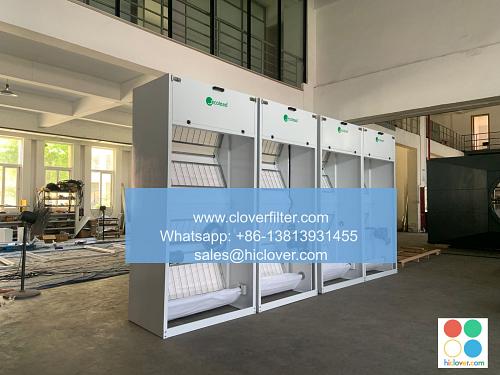How Air Filters Can Improve Indoor Air Quality in Schools

Indoor air quality (IAQ) is a significant concern in schools, where poor air quality can lead to respiratory problems, allergies, and reduced cognitive function in students and staff. One effective way to address this issue is by installing and maintaining high-quality air filters in schools. In this article, we’ll explore the importance of air filters in improving IAQ in schools and highlight various application areas where they can be used.
The Impact of Poor Indoor Air Quality on Schools
Poor IAQ can have severe consequences on the health and well-being of students and staff. Air pollutants such as particulate matter (PM), volatile organic compounds (VOCs), and biological contaminants can cause a range of health problems, including asthma, allergies, and respiratory infections. Furthermore, poor IAQ can also lead to reduced productivity, absenteeism, and decreased academic performance.
The Benefits of Air Filters in Schools
Air filters can play a crucial role in improving IAQ in schools by removing air pollutants and contaminants from the air. Some of the benefits of using air filters in schools include:
* Improved health and well-being: By removing air pollutants and contaminants, air filters can help reduce the risk of respiratory problems and other health issues.
* Increased productivity: Good IAQ can improve cognitive function and reduce fatigue, leading to better academic performance and productivity.
* Reduced absenteeism: By improving IAQ, air filters can help reduce the number of absences due to illness and allergies.
* Compliance with regulations: Air filters can help schools comply with indoor air quality regulations and standards, such as those set by the Environmental Protection Agency (EPA) and the American Society of Heating, Refrigerating and Air-Conditioning Engineers (ASHRAE).
Application Areas for Air Filters in Schools
Air filters can be used in various application areas in schools, including:
* Classrooms: Installing air filters in classrooms can help remove air pollutants and contaminants, improving the IAQ and creating a healthier learning environment.
* Offices and administrative areas: Air filters can be used in offices and administrative areas to improve IAQ and reduce the risk of health problems.
* Gyms and sports facilities: Air filters can be used in gyms and sports facilities to remove particulate matter (PM) and volatile organic compounds (VOCs) from the air, improving IAQ and reducing the risk of respiratory problems.
* Cafeterias and food preparation areas: Air filters can be used in cafeterias and food preparation areas to remove cooking fumes and odors, improving IAQ and reducing the risk of health problems.
Types of Air Filters Used in Schools
There are several types of air filters that can be used in schools, including:
* HEPA filters: High Efficiency Particulate Air (HEPA) filters can remove 99.97% of particles as small as 0.3 microns, including particulate matter (PM), pollen, and bacteria.
* Activated carbon filters: Activated carbon filters can remove volatile organic compounds (VOCs) and odors from the air.
* UV air purifiers: Ultraviolet (UV) air purifiers use UV light to kill bacteria, viruses, and other microorganisms in the air.
Conclusion
Improving indoor air quality in schools is crucial for the health and well-being of students and staff. Air filters can play a significant role in removing air pollutants and contaminants from the air, improving IAQ and reducing the risk of health problems. By installing and maintaining high-quality air filters in various application areas, schools can create a healthier learning environment and improve the overall health and well-being of their students and staff. Regular maintenance and replacement of air filters are essential to ensure their effectiveness and prolong their lifespan. It seems like you didn’t include a prompt. Could you please provide more details or specify what you would like to know or discuss? I’m here to help with any questions or topics you have in mind!

